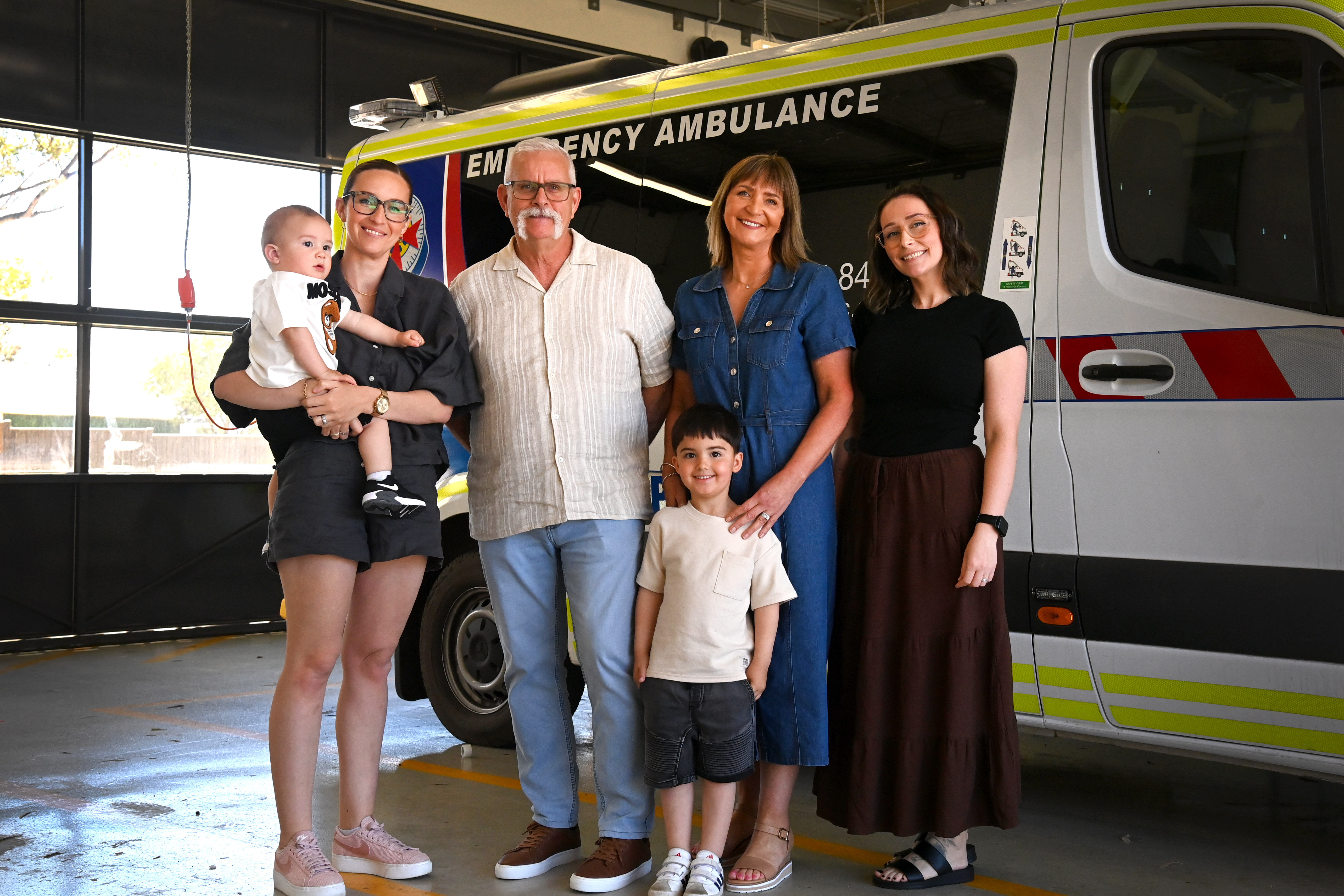- Published:
- Wednesday 29 October 2025 at 2:25 pm

A fun weekend away took an almost deadly turn for Melbourne man Adam Dalrymple last November, when a severe heart attack caused him to go into cardiac arrest. Now he’s reunited with the paramedic who saved his life almost a year ago.
The 62-year-old and his wife Debbie had just returned from canoeing when Adam started to feel unwell with chest pain.
The pair decided to head into town to visit the local pharmacy, however, when Adam’s symptoms continued to worsen, he knew he needed immediate medical assistance.
The pair called Triple Zero (000) with Ambulance Victoria (AV) Advanced Life Support (ALS) paramedic Madi Rouget arriving on scene shortly after.
“When I arrived, Adam said his pain had gone away, and his first set of vital signs were within normal limits. When the Seymour ALS crew arrived, he was loaded into the back of their ambulance for further assessment,” she said.
“But not long after, his chest pain returned and the monitor showed he was having a ST Elevation Myocardial Infarction (STEMI) heart attack.
“As soon as I saw the STEMI results on the monitor, I knew we needed to act fast.”
A STEMI is a type of severe heart attack, where one of the heart’s main arteries becomes blocked, stopping blood flow to part of the heart muscle.
Being in a rural area, the ALS crews administered Adam lifesaving drugs, while the Mobile Intensive Care Ambulance (MICA) crew were on their way.
Having worked at Fire Rescue Victoria for over 38 years, Adam was well educated about the severity of a STEMI heart attack through his emergency medical response training, and continued communicating with Madi and the other paramedics about his symptoms while being transported to The Northern Hospital.
On the way, Adam said he wasn’t feeling well, with his condition deteriorating he suddenly went into cardiac arrest in front of the attending paramedics.
The crews worked quickly, administering six minutes of cardiopulmonary resuscitation (CPR), three shocks from the defibrillator and adrenaline, before Adam regained consciousness and started asking what had happened.
When he arrived at The Northern Hospital, Adam had emergency surgery to insert a stent. He remained at the hospital for a few days before returning home.
Symptoms of a heart attack can include pain in your chest, arm, shoulder, back, neck or jaw, as well as shortness of breath, dizziness, sweating, nausea or extreme fatigue.
“Because of my background as a firefighter, I knew the symptoms to look out for and was aware that I needed professional help quickly,” Adam said.
“In that role, I’ve previously performed CPR on people in cardiac arrest. It’s confronting to know that happened to me and I’m lucky the paramedics were there to help.
“I know that I wouldn’t be here without the exceptional care they provided me.”
AV has one of the world’s best survival rates for cases where the patient has a cardiac arrest in front of paramedics, with the 2023-24 Victorian Ambulance Cardiac Arrest Registry (VACAR) report showing 66 per cent of patients survive to hospital discharge.
This is due to factors such as the early recognition and treatment of STEMI heart attacks and the preparation by the attending paramedics for deterioration, ensuring there is virtually no delay to patient treatment, which was certainly the case for Adam.
AV paramedics are able to provide hospital-level care for cardiac arrest patients on the roadside, improving their chances of survival.
Adam has made a full recovery and is sharing his story this Shocktober to encourage others to know what to do if you see someone in cardiac arrest.
Cardiac arrest can happen to anyone, anytime, anywhere, at any age, health or fitness level. Every day, around 21 Victorians experience a cardiac arrest and only one in 10 survive.
For every minute CPR is delayed, survival decreases by 10 per cent.
This Shocktober, AV is calling on all Victorians to learn CPR and know where your nearest publicly accessible automated external defibrillator (AED) is, so you can help save a life if someone nearby experiences a cardiac arrest.
The public is also encouraged to sign up to the GoodSAM app, which connects patients in cardiac arrest with a nearby volunteer who is willing to start hands-only CPR in the crucial moments before paramedics arrive. More than 17,300 Victorians are registered GoodSAM responders – but we need more.
Find a list of AEDs in your area or register a device. Resources on CPR are also available in multiple languages.
Updated


